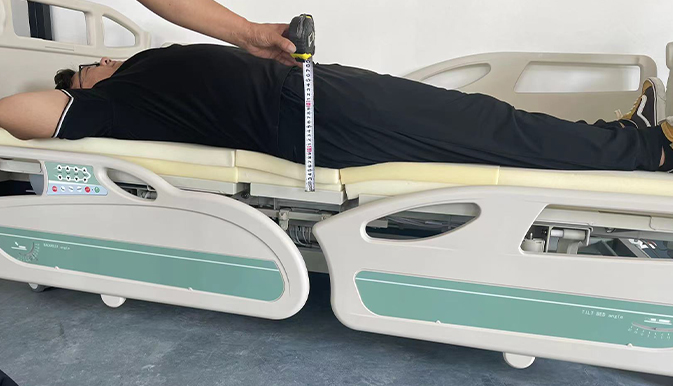Pressure Injury Management and Care Service Support Program
Comprehensive Pressure Injury Care Services A Necessity in Modern Healthcare
Pressure injuries, often referred to as pressure ulcers or bedsores, are localized damage to the skin and underlying tissue that occurs due to prolonged pressure, shear, and friction. These injuries pose significant challenges in healthcare settings, impacting patient comfort, recovery, and overall well-being. To address this critical issue, the development and implementation of specialized pressure injury care services are essential in modern healthcare. This article explores the importance of these services, their components, and the impact they can have on patient outcomes.
Understanding Pressure Injuries
Pressure injuries can develop in any individual who is immobile for extended periods, making them a common concern among elderly patients, those with limited mobility, and individuals with chronic illnesses. The severity of pressure injuries is classified into stages, with Stage I being a mild reddening of the skin, while Stage IV involves extensive damage to skin and underlying tissues, including muscle and bone. The prevention and management of these injuries are crucial, as they can lead to severe complications such as infections, prolonged hospital stays, and increased healthcare costs.
The Importance of Specialized Care Services
The establishment of dedicated pressure injury care services highlights a proactive approach to mitigating this often-overlooked issue. These specialized services focus on both prevention and comprehensive treatment of pressure injuries, providing a structured framework to manage the risk effectively. Effective pressure injury care necessitates a multidisciplinary approach, incorporating the expertise of nurses, physicians, nutritionists, physical therapists, and wound care specialists.
Key Components of Pressure Injury Care Services
1. Assessment and Risk Evaluation The first step in any effective pressure injury care program is a thorough assessment of the patient's condition. This includes identifying risk factors such as immobility, nutritional deficits, and underlying health issues. Utilizing standardized risk assessment tools, such as the Braden Scale, helps healthcare professionals determine the level of risk and tailor prevention strategies accordingly.
pressure injury care service

2. Prevention Programs Prevention is at the forefront of pressure injury care. Implementing protocols such as regular repositioning, the use of specialized mattresses, and maintaining skin hygiene are vital components. Education for healthcare staff and caregivers about recognizing early signs of pressure injury and effective preventive measures is crucial.
3. Individualized Treatment Plans For patients already experiencing pressure injuries, individualized treatment plans are necessary. This involves selecting appropriate wound care products, such as dressings that maintain a moist environment while providing protection, and employing techniques that promote healing. Regular reassessment of the wound is essential to ensure optimal healing.
4. Nutritional Support Nutrition plays a critical role in wound healing. A well-balanced diet rich in protein, vitamins, and minerals is vital for tissue repair. Nutritionists within pressure injury care services can provide dietary recommendations to enhance healing and overall patient health.
5. Education and Training Continuous education and skills training for healthcare professionals are essential to improve care quality. Workshops, online modules, and simulation training can keep staff updated on the latest evidence-based practices for pressure injury prevention and management.
The Impact on Patient Outcomes
The implementation of specialized pressure injury care services has been shown to significantly reduce the incidence and severity of pressure injuries. By focusing on prevention, early detection, and effective management, these services not only enhance patient comfort but also improve overall healthcare outcomes. Patients benefit from a shorter recovery time, reduced pain, and a decreased risk of complications. Additionally, healthcare facilities can experience lower costs related to extended hospital stays and additional treatments.
Conclusion
In conclusion, pressure injury care services are an indispensable part of modern healthcare that addresses a pressing need for patient-centered care. Through comprehensive assessment, prevention, individualized treatment, and continuous education, these services ensure that healthcare providers can effectively manage and prevent pressure injuries. As the healthcare landscape continues to evolve, prioritizing the establishment and improvement of these specialized services will be crucial for enhancing patient safety, comfort, and overall quality of care. Ensuring that every patient receives the highest standard of care is not just an ideal; it is a fundamental responsibility of the healthcare system.
-
The Effect of Coconut Foam Mattress Breathability and Humidity Regulation on Improving Sleep QualityNewsJul.03,2025
-
How Wave Mattress Systems Improve Blood Circulation During ImmobilityNewsJul.03,2025
-
The Climate-Adaptive Sleep Revolution: Exploring the Benefits of Cooling Gel Memory Foam MattressesNewsJul.03,2025
-
Exploration of the Role of Coconut Foam Mattress in Preventing Bedsores in the ElderlyNewsJul.03,2025
-
Comparing Wave Mattress and Air Mattress: Which Is Better for Medical Use?NewsJul.03,2025
-
Analysis of Comfort and Environmental Performance of Natural Latex and Coconut Foam MattressNewsJul.03,2025
-
Multi-Layer Construction for Enhanced Performance in Gel Mattress PadNewsJun.24,2025

